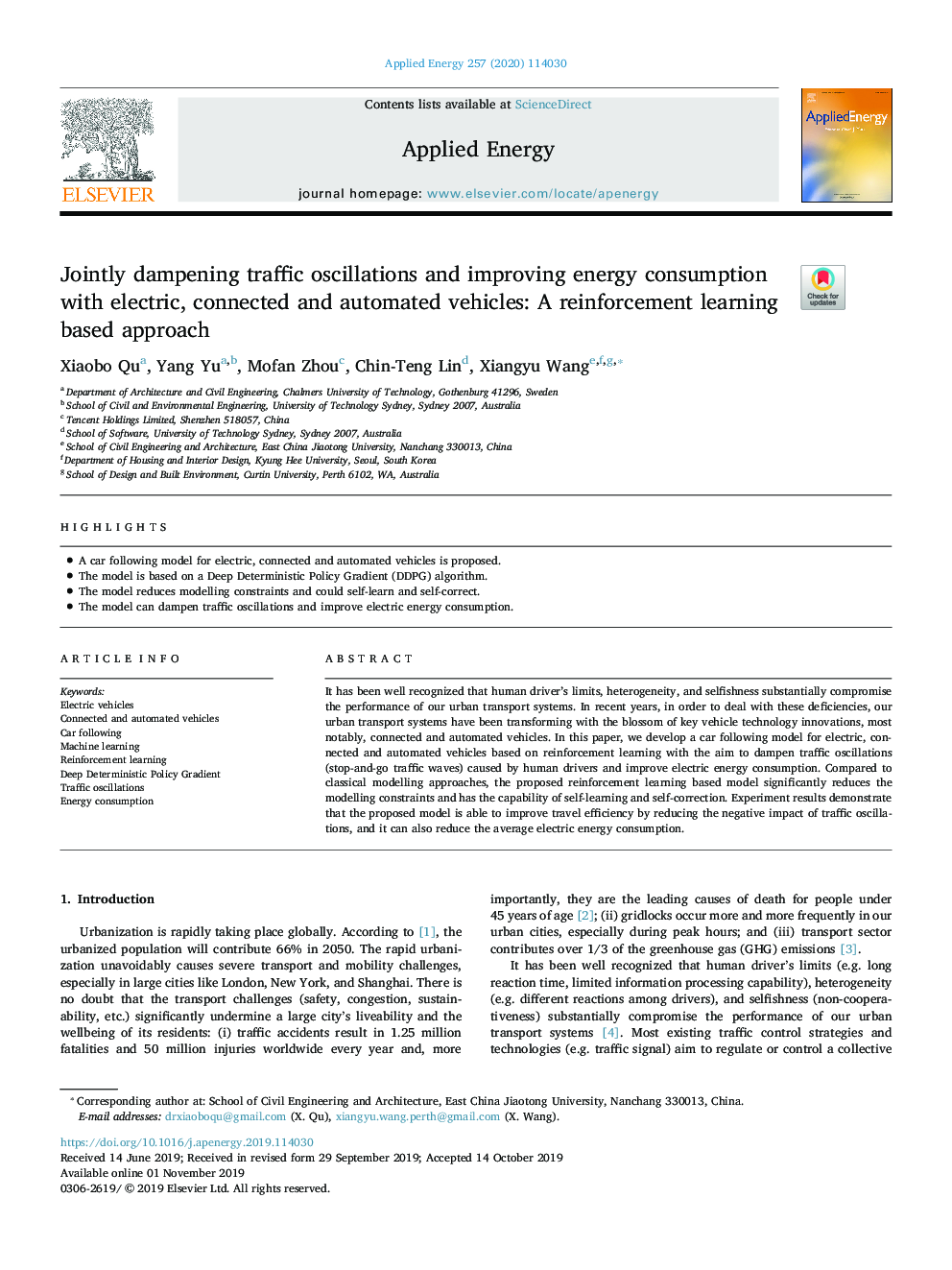| Article ID | Journal | Published Year | Pages | File Type |
|---|---|---|---|---|
| 13418483 | Applied Energy | 2020 | 11 Pages |
Abstract
It has been well recognized that human driver's limits, heterogeneity, and selfishness substantially compromise the performance of our urban transport systems. In recent years, in order to deal with these deficiencies, our urban transport systems have been transforming with the blossom of key vehicle technology innovations, most notably, connected and automated vehicles. In this paper, we develop a car following model for electric, connected and automated vehicles based on reinforcement learning with the aim to dampen traffic oscillations (stop-and-go traffic waves) caused by human drivers and improve electric energy consumption. Compared to classical modelling approaches, the proposed reinforcement learning based model significantly reduces the modelling constraints and has the capability of self-learning and self-correction. Experiment results demonstrate that the proposed model is able to improve travel efficiency by reducing the negative impact of traffic oscillations, and it can also reduce the average electric energy consumption.
Keywords
Related Topics
Physical Sciences and Engineering
Energy
Energy Engineering and Power Technology
Authors
Xiaobo Qu, Yang Yu, Mofan Zhou, Chin-Teng Lin, Xiangyu Wang,
